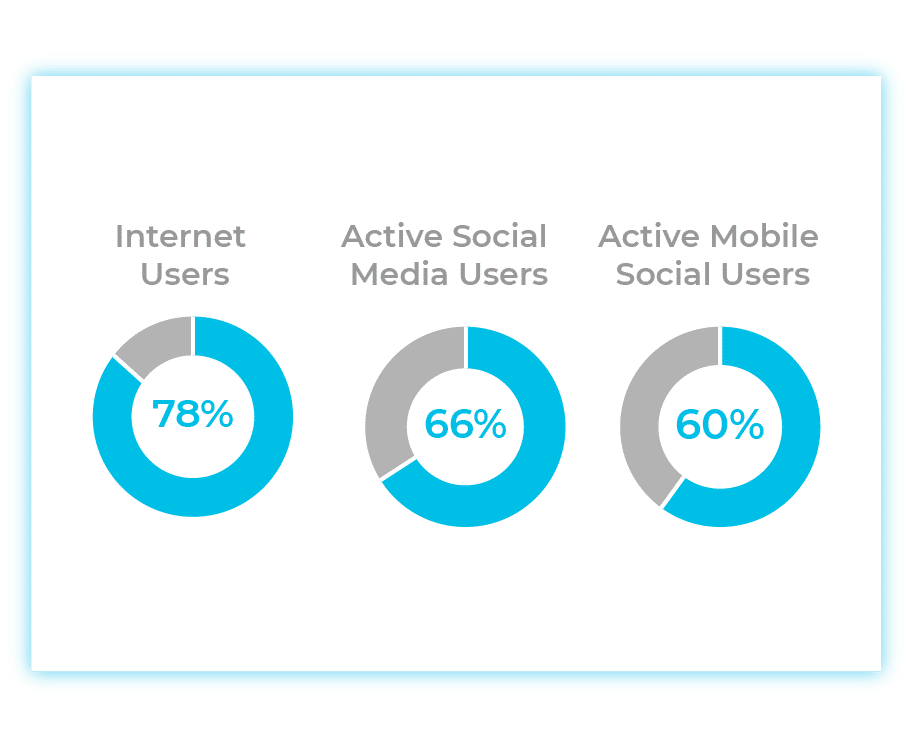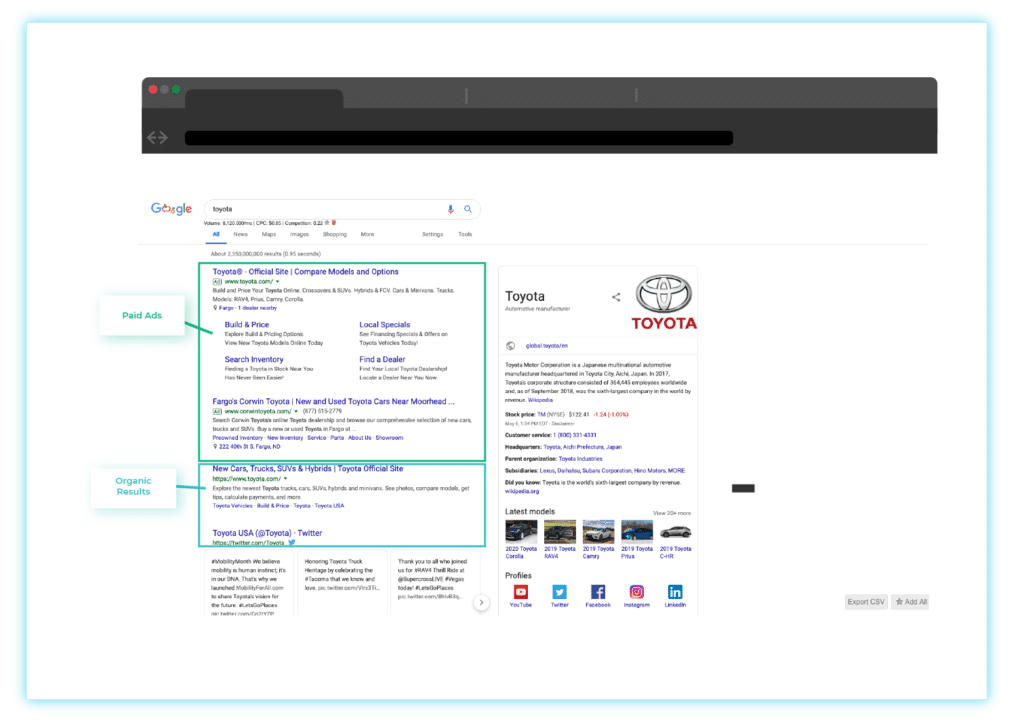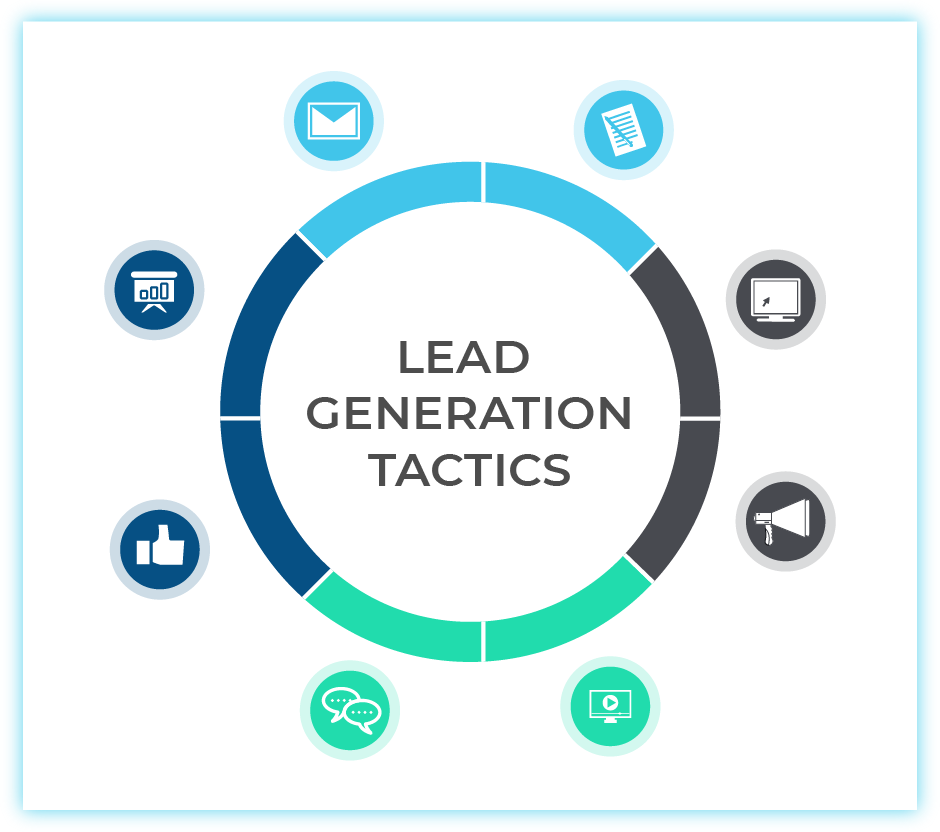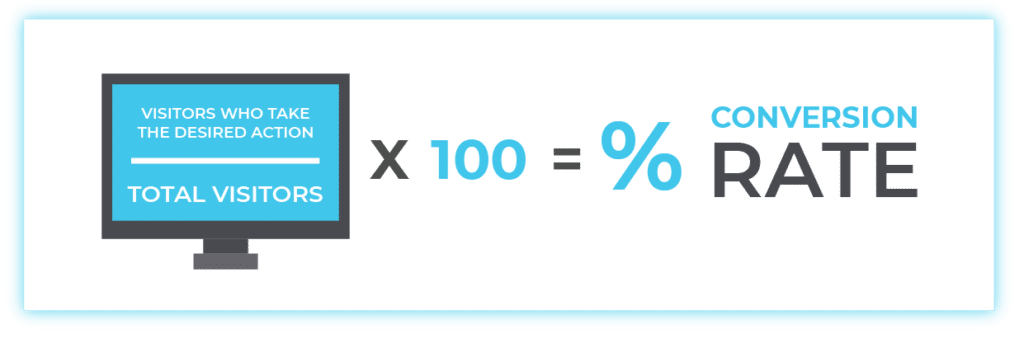What is Digital Marketing?
When someone says the term “digital marketing” they could be referring to a number of different tactics, strategies and even channels. In reality, the line between digital marketing and just marketing has blurred as technology has made advances. So we wanted to take a step back to show you what it is, what it encompasses and how you can get started.
Overview
Below is an overview of what we cover in our guide to digital marketing:
- Definition of Digital Marketing
- History of Digital Marketing
- Online Vs Offline Digital Marketing
- Marketing Strategy Vs Tactic—What’s the difference?
- Benefits of Digital Marketing
- Who Should Be Using Digital Marketing?
- Digital Marketing Strategies
- Cost of Digital Marketing
- Measuring Digital Marketing Effectiveness
- Where Do I Start?
- How Can AdShark Marketing Help?
Definition of Digital Marketing
There are many cumbersome and confusing definitions for digital marketing out there. And most of the time, people use digital marketing synonymously with online marketing. However, it includes more than just web-based tactics.
Neil Patel explains digital marketing simply as promoting or selling products or services using electronic devices.
History of Digital Marketing
Digital marketing is a buzzword made popular in the early 2000s. But when did it begin? That depends on your view of what digital marketing is. Some reference Guglielmo Marconi who invented the radio.
Others link digital marketing back to Ray Tomlinson who sent the first email.
And others refer back to 1990 when Archie, the first search engine was born—three years later the first clickable banner went live.

Online VS Offline Digital Marketing
How can there be offline digital marketing? Most people associate digital marketing with social media, email, search engines and really anything connected to the internet.
But, if we dissect the definition above it says promoting or selling using electronic devices. So based on that statement digital marketing includes both online and offline tactics.
Offline Digital Marketing
Offline digital marketing is promoting your products or services using electronic channels not connected to the internet. Digital marketing tactics that are considered offline include:
- Radio marketing
- TV marketing
- Electronic billboards
- Phone marketing
Online Marketing
Online marketing, or internet marketing, is promoting your products or services using the internet or email to drive sales, which includes:
- Search engine optimization (SEO)
- Search engine marketing (SEM)
- Content marketing
- Social media marketing (SMM)
- Paid social media advertising
- Pay-per-click advertising (PPC)
- Affiliate marketing
- Influencer marketing
- Email marketing
Marketing Strategy Vs Tactic—What’s the difference?
There’s a misunderstanding between a strategy and a tactic.
Strategy without tactics is the slowest route to victory. Tactics without strategy is the noise before defeat.
-Sun Tzu (~500 BC)
A marketing strategy is your big-picture vision, focused on helping you reach your business goals and objectives. It’s a plan that allows you to structure what you’re focusing on every day.
A marketing tactic is how you execute your vision (strategy). It’s the smaller action items you check off on a daily, weekly or monthly basis. These tactics should be aligned to help you meet your goals and ultimately have a successful strategy.
Having a good strategy mixed with the right tactics means that you have a better chance of meeting your goals. And if you don’t meet them, you will know why and can adapt based on your results.
Benefits of Digital Marketing
Access
The next time you’re at a party, a restaurant or even (and unfortunately) driving down the interstate—look around. Almost every person will be on their phone. With the rise of smartphones since 2008 we literally have access to the world in the palms of our hands. And we aren’t shy about using it. Americans, on average, spend more than 11 hours per day watching, reading, listening or interacting with media. More than 3 hours of that time is spent on a smartphone, computer or tablet.

Cost
Digital marketing gives even the smallest of businesses access to 77% of Americans who are regularly active online. Not only do you have access to Americans, but people around the world. And at a fraction of the cost of traditional media. You no longer need millions of dollars to reach audiences the size of the super bowl.
Measurable results
It’s really easy to view the results of your digital marketing efforts through website analytics, social media analytics and sales from your online site. Whereas with traditional marketing tactics you based it off information provided to you by publishers and got general ideas of the audience.
Target Audience
Because of all the data available online, you also have more access to who your customer is. You no longer need to guess or generalize. With digital marketing, you have the ability to drill down by location, age, gender, income, and even interests.
Customer Relationships
You have the ability to personalize your communications with your customers by tracking their spending habits, birthday or anniversary celebrations, and even chat with people without picking up the phone.
Using social media also keeps customers engaged, allows you to respond to feedback or address complaints.
Adaptable
Say you have the best possible strategy paired with the right tactics for your industry or product, but your results are lackluster. Well, all you need to do is analyze the data to find inconsistencies in your campaign.
Sometimes you just need to make small tweaks, while other times you might need to completely scrap your campaign, the point is that you are able to quickly respond to things that aren’t working.
Who Should Be Using Digital Marketing?
As a digital marketing agency, we might be a little bit biased… but our answer is honestly every business should be using digital marketing in some capacity. If you want to grow your business you need to be where consumers are and today, they are using technology for shopping, communicating, doing their jobs, and even networking.
The barrier for entry is low for small businesses and there are multiple options of easy-to-use tools for building websites, designing and sending emails, capturing leads and offering products for sale.
Working with an agency, you get the expertise and access to advanced strategies to help you grow your audience, increase your conversions and improve sales. If you are unsure of where to start, but know what you want to accomplish we suggest contacting a digital marketing agency to help you map your goals to an effective digital marketing strategy.
Digital Marketing Strategies
The first thing you need to define to achieve digital marketing success is your digital marketing goals and objectives. Once you’ve documented your goals you can begin to determine what strategies will help you reach your goals. Below is a brief description of different types of digital marketing strategies that can help you reach your goals.
Search Engine Marketing (SEM)
Search Engine Land defines search engine marketing as the process of gaining website traffic by purchasing ads on search engines. Many people use SEM, paid search and pay-per-click (PPC) interchangeably when referring to paid ads.
Google Ads and Bing Ads are the two main platforms search marketers use for paid ads. Yahoo Gemini was the third until Microsoft announced a partnership with Yahoo, serving their network under the Bing umbrella.
You can choose different types of paid search ads including display ads, PPC ads, and video ads.

SEM Tactics
- Google Ads
- Bing Ads
- Facebook Ads
- Display Ads
- Google Shopping
Social Media Marketing
Social Media Marketing (SMM) uses social media platforms to promote your business and help you achieve your marketing goals.
Marketers use social media to drive engagement by regularly sharing content including blogs, videos, and images. Paid social media advertising is another option. Ecommerce marketers use Facebook and Instagram to sell products by reaching hyper-targeted audience.

Social Media Channels
There seems to be a new social media channel that pops up every day. Because most marketing teams have limited resources, choosing the right channel for your business is really important. What platform you focus on depends on where your audience is and what your goals are. Here is a list of the most popular platforms to market your business.
- Youtube
- Snapchat
Search Engine Optimization
Brian Dean defines SEO as the art and science of driving targeted website traffic to your website from search engines. In essence, it’s a huge driver of traffic to your site and it’s earned! So how do you include an SEO strategy in your overall digital marketing plan? You need to align your SEO strategy to your overall goals and focus on what people want. Because search engines want your content, your site, and your business to match what people want most. There are three main SEO tactics.
SEO Tactics
- Technical SEO
- On-page SEO
- Off-page SEO

Lead Generation
Lead generation is defined as the process of identifying or cultivating potential customers for a business’s products or services.
A lead is someone who is interested in what your company has to offer. They visit your site, find something of value (free trial, downloadable content, or an offer) and provide their information to get it. Once you capture a lead they are then pushed through a funnel with the intention of nurturing them to eventually become a customer.

Lead generation is also a highly effective tactic for paid search and paid social. How you set up your landing page, who you are targeting, your budget and what your CTA is will all be factors in your campaign’s success.
Lead Generation Tactics
- Email Marketing
- Content Marketing
- Paid Search
- Paid Social
- Pop-Ups
- Website or landing pages
- SEO
- Webinars
Email Marketing
Email marketing has been around for quite a while. It uses email to market your products or services. There are a ton of email marketing tools available for businesses large and small. You can use email marketing in conjunction with marketing automation to create efficiencies within your team.
Email marketing is also an effective tactic to develop and nurture relationships with potential customers or clients.
Email Marketing Tactics
- Transaction Emails Thank yous, confirmations, or receipts.
- Promotional Emails Sales, new products, or newsletters.
- Lifecycle Emails Abandoned cart, time since last purchase, or recommendations based on p
revious purchases.
Inbound Marketing
Hubspot defines inbound marketing as a method of attracting, engaging and delighting people to grow a business that provides value and builds trust. The idea behind it is to drive an audience to your site using content that addresses pain points of your target audience, which in turn gives your brand credibility.

The inbound methodology combines marketing, sales and service to bring a holistic experience to your ideal and current customers with the goal of providing value at scale to grow your business. To effectively deliver an inbound experience your business would need to implement tools, like CRM and Marketing Automation.
Content Marketing
Content marketing is about telling your story. Whether you’re a small business or a large B2B corporation, every brand has a story. And as humans, we are automatically drawn to good storytelling. That’s why content marketing is so popular.
The goal of a content marketing strategy is to build a strong relationship with your audience through valuable content that is relevant to their needs in the hopes they eventually make a purchase. Unlike paid marketing strategies, content marketing takes a longer time to build an audience and grow your business. The benefits are that you ultimately have a more loyal customer base and provide value to them.
Influencer Marketing
Influencer marketing is essentially an endorsement for the digital age. The difference between an endorsement and influencer marketing is there is typically a collaboration between the brand and the influencer. To be considered an influencer you need a large audience on the internet or on social media.
An important thing to keep in mind is that an influencer marketing campaign’s focus should be marketing to the influencers. It’s not about finding someone with an audience and offering them money for exposure.

Snapchat star, Jerome Jarre, partnered with Turkish Airlines, raising $1 million in just 24 hours to bring humanitarian aid to the people of Somalia.
Conversion Rate Optimization
Most marketers focus on strategies that drive traffic to their site. Conversion Rate Optimization (CRO) focuses on converting more of your current traffic to customers.
A conversion is an action that you want your website visitor to complete. It could be anything from filling out a form to purchasing a product. Setting a conversion goal is a little more complicated than defining a traffic goal or sales goal. But, increasing the number of visitors to your site might decrease the quality of those visitors and negatively impact your conversion rate.
So, implementing CRO strategies, especially for ecommerce marketing, could be a better approach. Examples of strategies include, A/B testing landing pages, adding a chatbot to high-converting pages, optimizing high-performing blog posts and leveraging retargeting methods.

Cost of Digital Marketing
The number one question we get is, how much is digital marketing going to cost me? That depends on what your goals are and what you’re willing to invest in. The number one way people budget for marketing, in general, is based on a percent of revenue.
Companies, on average, spend about 10% of their total revenue for their entire marketing budget and 35% of that is spent on digital marketing.
This is a starting point when determining your marketing budget, but your needs could be different depending on your company’s lifecycle.
If you are an established company, you might spend less but if you are wanting to grow fast, you will want to spend more.
Experts recommend increasing digital marketing spend to 50% of your marketing budget for 2019 and keep increasing it over time. The trend is and has been moving to a digital world.
Another option for determining your digital marketing budget is to analyze your acquisition costs over time. To do this you would need to review your past spend on Google, Facebook, Bing and even SEO and calculate how much it costs to acquire a new customer.
You can then take this number and multiply it by your growth goals to determine how much extra you need to spend every month to reach your goals.
This equation doesn’t take into consideration the tactics used to lower those acquisition costs.
Measuring Digital Marketing Effectiveness
Digital marketing definitely doesn’t have a lack of data. In fact, you could argue there is almost too much data. This can become a problem if you aren’t sure what insights can be gained from your data and what insights will send you down a rabbit hole.
The most important thing to keep in mind is that your marketing goals should be aligned to your business goals. Once you align your goals, you can choose the key performance indicators (KPIs) that will help you measure the effectiveness of your campaigns and provides insight into how to improve.
KPIs are measurements that demonstrate how effectively a company is achieving its key business objectives. If you’re hoping to improve sales over the next year, then you will want to focus on revenue using Google analytics.
If you need your marketing to drive more leads, then you will want to track lead generation and conversion rate.
The point of analytics is two-fold, one to prove that your strategies and the costs to the business are worth it.
The other provides insight when your strategies aren’t working and gives you the ability to pivot your strategies in order to improve the results.
The Difference Between ROAS and ROMI
In the end, you need a key metric to measure the impact of your campaigns. Two common metrics include return on ad spend (ROAS) and return on marketing investment (ROMI). So what’s the difference and which metric do you choose? Again, that answer depends on the ultimate goals of your campaigns.
Return on marketing investment (ROMI) is used to show incremental revenue attributed to your campaigns. ROMI factors in the cost of your marketing campaign plus the cost of goods sold, or any operational costs related to your marketing investments.

Return on Advertising Spend (ROAS) focuses on the efficacy of a digital advertising campaign. This metric is used to evaluate what methods are working and how to improve future advertising efforts.

ROAS is essential for quantitatively evaluating the performance of ad campaigns and how they contribute to an online store’s bottom line.
ROAS is a good metric to determine if your ad is performing, whereas ROMI is a good metric to determine if your overall marketing campaigns are growing your business.
[contact-form-7 id=”7920″ title=”Email Newsletter Contact Form”]
Where Do I Start?
This is a lot of information to take in, and the truth is we could go even deeper on each topic. If you’re just starting to consider digital marketing efforts and feeling overwhelmed on where to begin, we can help.
Like traditional marketing, you need to start by documenting your goals. From there, you can look at what strategies and tactics would be effective to meet your goals.
Digital marketing is successful if you know your audience, understand your goals and use strategic tactics that align with your goals.
How Can AdShark Marketing Help?
Are you ready to use digital marketing to help grow your business? Do you need a partner to help you make the right decisions for your company? Feel free to reach out to our experts. We will sit down with you to understand your industry, business, and goals and provide custom strategies to help you grow sales and increase traffic.
Ready To Grow?
Let's Talk!


